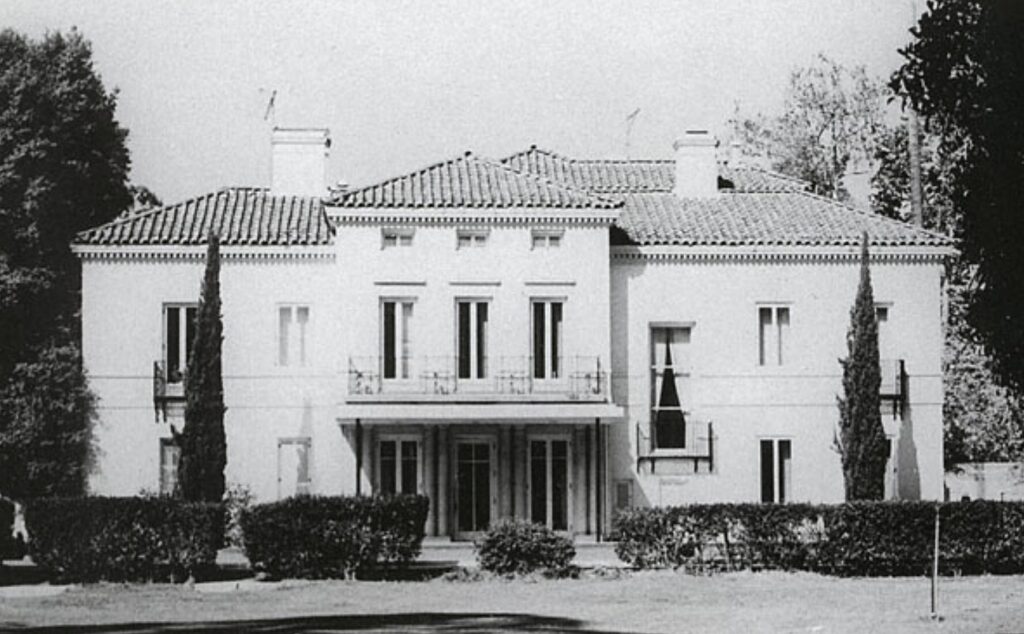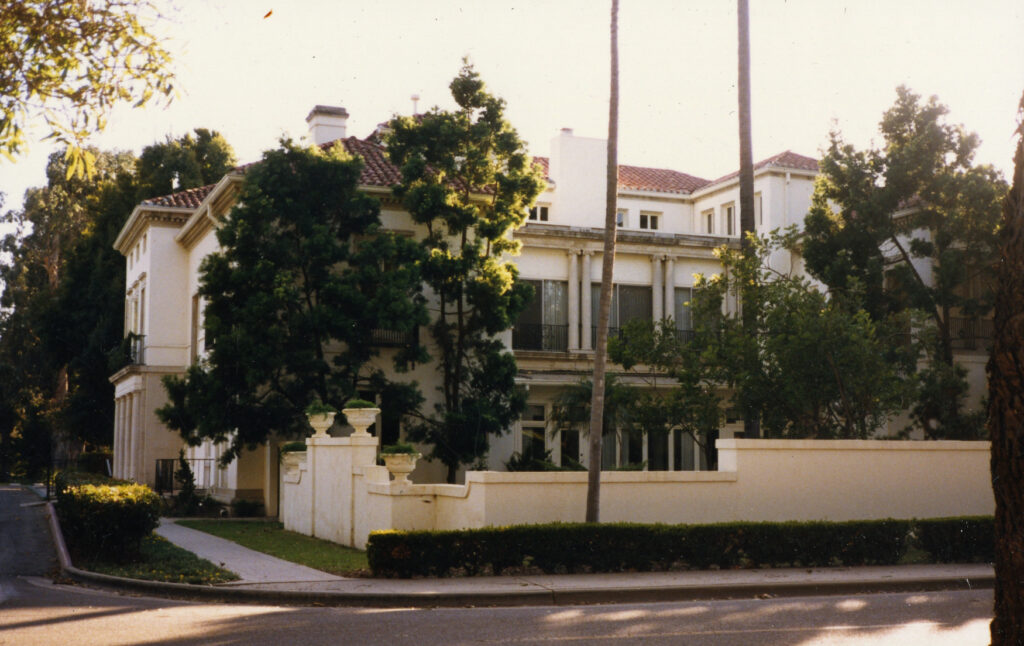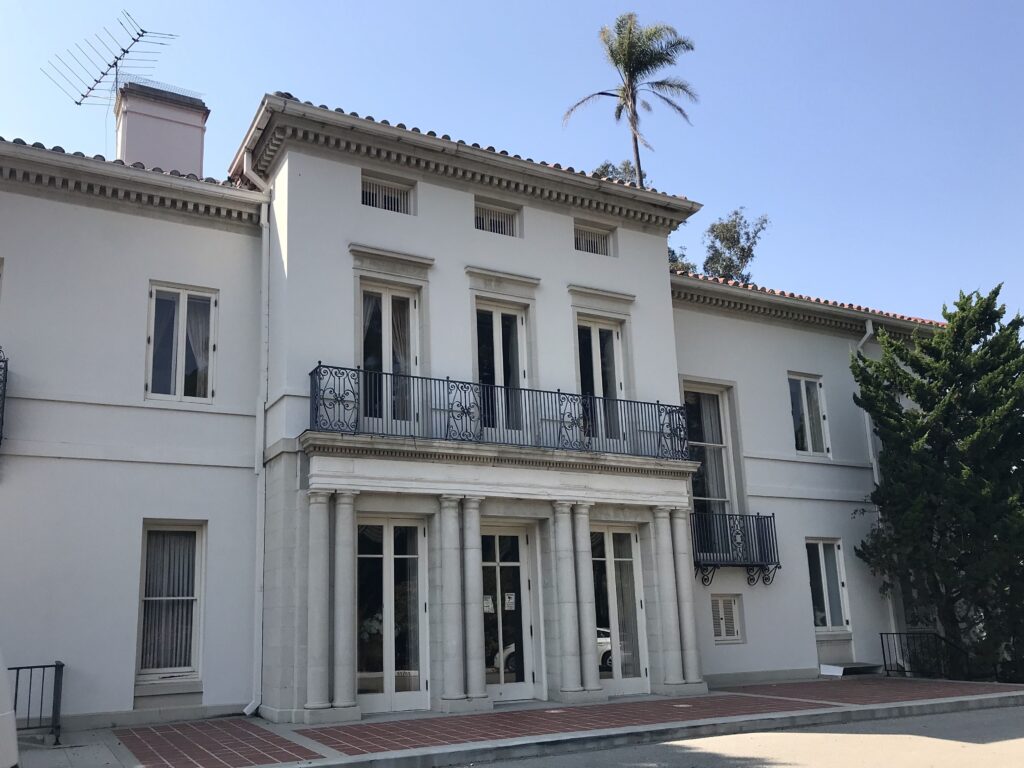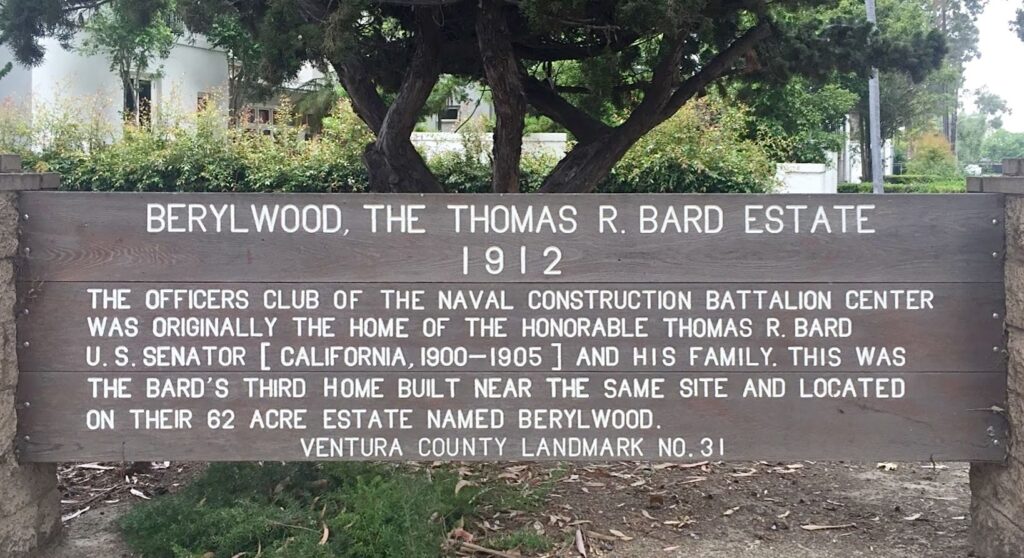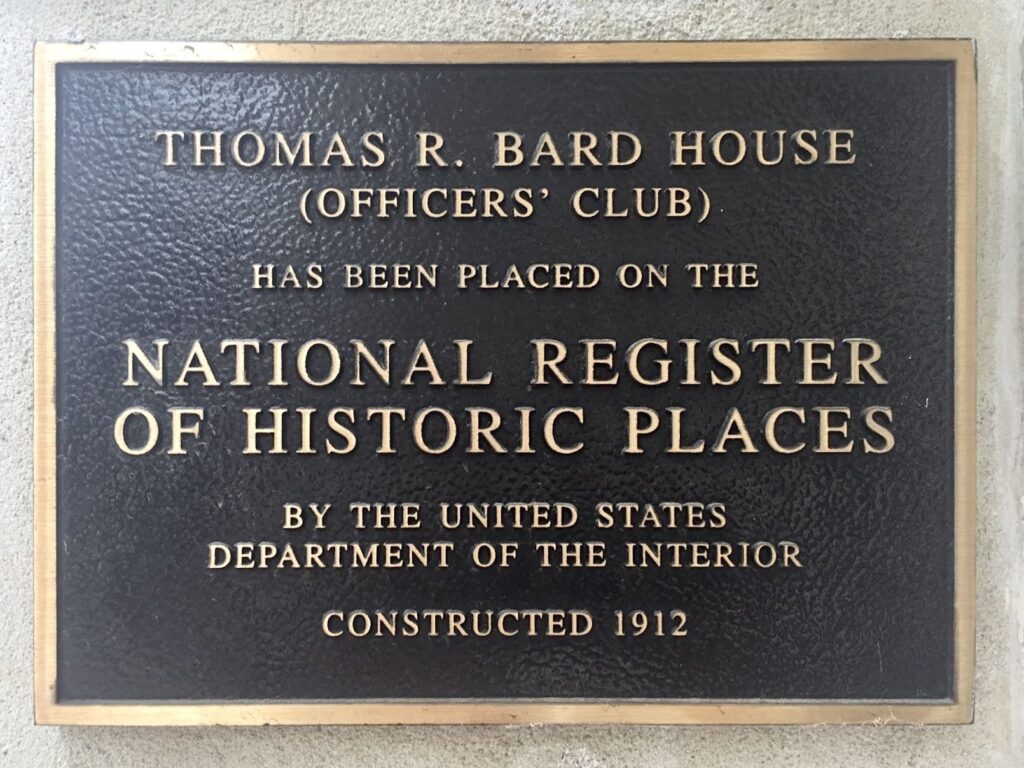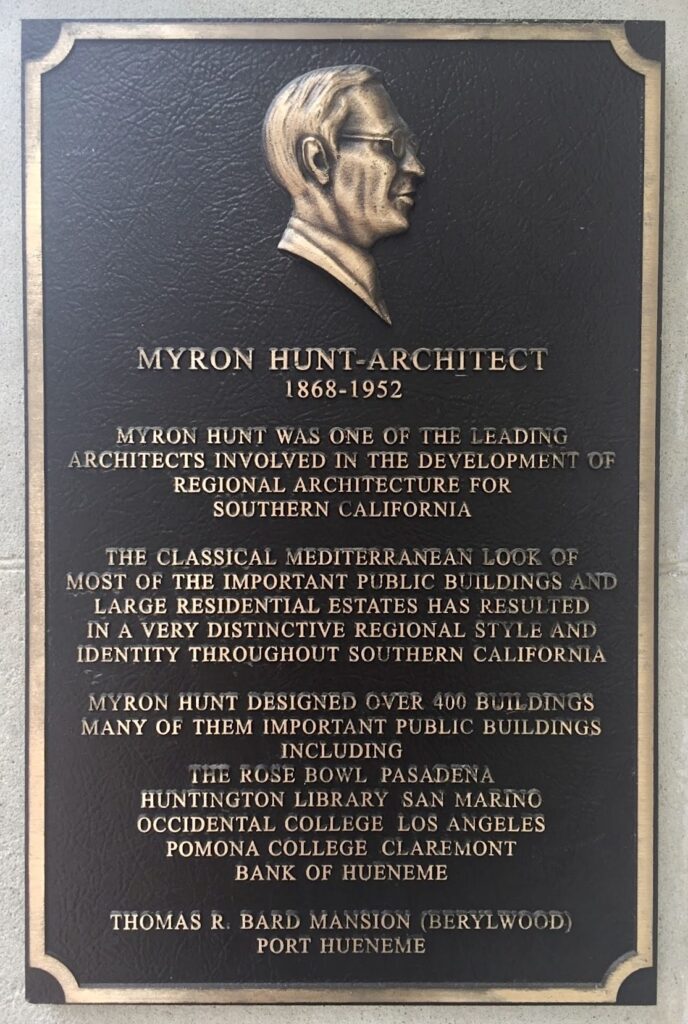Ventura County Landmark No. 31: Thomas R. Bard Mansion (aka Navy Officers Club)
Historical Background
The Bard Mansion is the largest historic house in Ventura County. Built in 1912 on the site of an earlier home of the Thomas R. Bard family, the mansion was part of the family’s 62-acre estate known as Berylwood. The three-story brick mansion, built in the Italian Mediterranean style and designed by Myron Hunt, has twelve bedrooms, seven baths, and cost $110,000 to build. Senator Bard died in 1915, so he was able to enjoy the mansion for only three years. Senator Bard’s widow lived in the mansion until she died in 1937. Leased by the U.S. Navy during World War II and finally purchased by the Navy in the early 1950s, it is now used as the Officers Club at the Navy base.
J. Patrick O’Hara of the Los Angeles Times described the property as follows: “The estate, known as Berylwood, had grounds lavishly landscaped with trees and plants that Thomas Bard collected from around the world. The 17,400-square-foot house featured a ground floor devoted to office, eating and kitchen space and a second floor with large, airy bedrooms. Servants’ quarters were in the attic.” (O’Hara, 1991).
Thomas R. Bard was the pioneer who developed the oil industry in Ventura County, engaged in agriculture and shipping, and became a U.S. Senator. Thomas Bard was a key figure during the reformation of California in the early 1900s (Ventura Weekly, 2007). Since the Civil War, Southern Pacific Railroad became powerful enough to virtually run the entire state of California (Ventura Weekly, 2007). Bard was the key figure to revolt against Southern Pacific. At that time, Southern Pacific was pushing Colonel Daniel M. Burns to become a Senator. Thomas Bard, with enough support, took the seat at the United States Senate. He campaigned to expand the city of Port Hueneme. Afterwards, Bard’s children would put his plan to work. Because of Thomas Bard, Port Hueneme has the only deep-water port in this area. Bard died in his home in Berylwood, Hueneme on March 5, 1915 (Ventura Weekly, 2007). Other Bard family related landmarks include the following: No. 19, 24, 31, 32, 49, 50, 88, and 153.
Myron Hunt - Architect, 1868-1952
Myron Hunt was one of the leading architects involved in the development of regional architecture for Southern California. The Classical Mediterranean look of most of the important public buildings and large residential estates has resulted in a very distinctive regional style and identity throughout Southern California. Myron Hunt designed over 400 buildings, many of them important public buildings including the Rose Bowl – Pasadena; Huntington Library – San Marino; Occidental College – Los Angeles; Pomona College – Claremont; Bank of Hueneme; and Thomas R. Bard Mansion.
References
O’Hara, J. Patrick (June 7, 1991). “Landmarks/County Historical Sites: Senator’s Home Now an Officers’ Club.” Los Angeles Times. https://www.latimes.com/archives/la-xpm-1991-06-07-me-63-story.html.
Ventura Weekly (December 6, 2007). “Thomas Bard, Father of Port Hueneme”. http://www.venturaweekly.com/history/thomas-bard.
Date Designated: March 1977
Location: Gualdalcanal Street at Bard Lane, U.S. Naval Construction Center, Port Hueneme
Photos:


